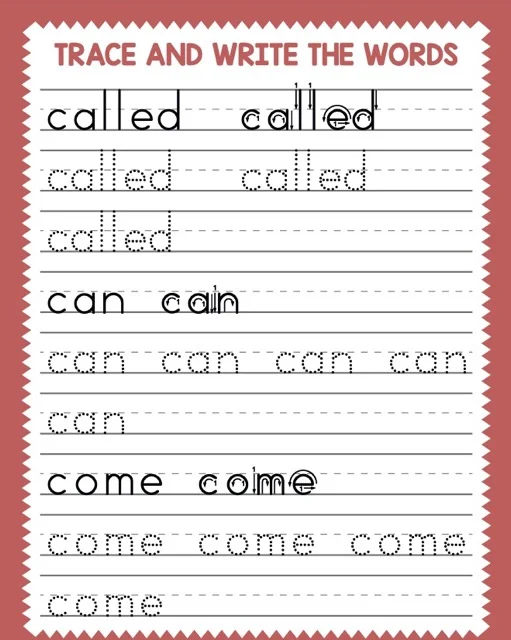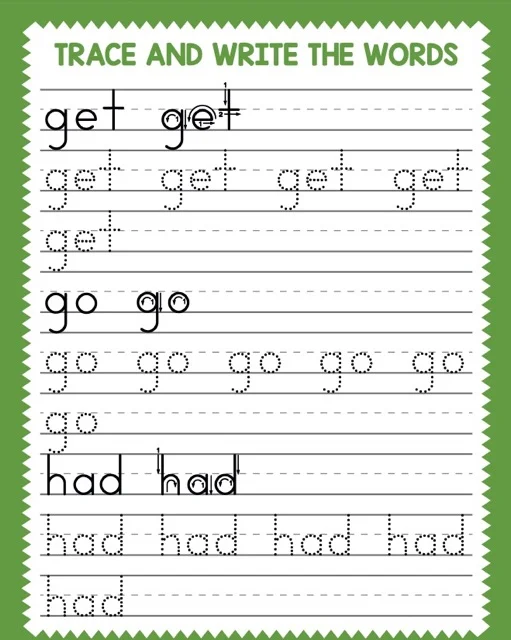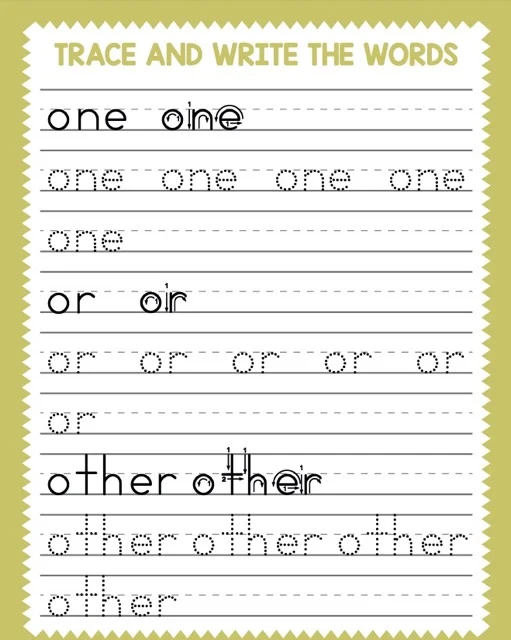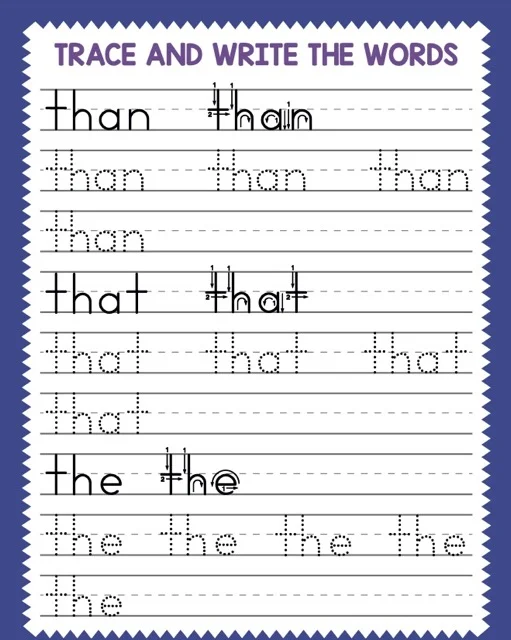Testing Theme: A Sight Word Resource
The text reviews "Testing Theme," a resource for teaching sight words. Sight words, irregular words crucial for reading fluency, are best learned through repetition using methods like tracing and games. "Testing Theme" utilizes a tracing-based approach, offering a kinesthetic element beneficial for certain learning styles. The review emphasizes the importance of diverse learning methods, including digital resources, to enhance sight word acquisition in young learners. The resource is deemed suitable for preschool and early elementary students.
Sight Word Mastery: A Resource Review
Briefing Doc: Sight Word Mastery and "Testing Theme" Resource Review
Main Themes:
●
Sight Word Importance: Sight words are crucial for early reading fluency and comprehension. Their irregular spelling necessitates a different learning approach compared to phonetic decoding.
●
Mastery Methods: Repetition and exposure are key to sight word acquisition. Tracing, flashcards, games, and targeted reading materials are recommended methods.
●
Resource Effectiveness: "Testing Theme" provides a tracing-based approach, offering a kinesthetic element that can be beneficial for specific learning styles. Digital resources provide alternative engagement options.
Most Important Ideas/Facts:
●
Definition: "Sight words are common words frequently encountered in reading and writing. They are challenging because their spellings often deviate from typical phonetic rules, making them difficult to decode phonetically." (Sight Word Quiz Answer Key)
●
Impact on Fluency: "Recognizing sight words instantly, a result of mastery, reduces the cognitive load on young readers. This allows them to read more fluently, leading to improved comprehension as they can focus on the meaning of the text rather than decoding individual words." (Sight Word Quiz Answer Key)
●
Role of Repetition: "Repetition reinforces the visual patterns and spellings of sight words in a child's memory. Repeated exposure through tracing, reading, and games helps solidify the recognition of these words." (Sight Word Quiz Answer Key)
●
"Testing Theme" Approach: The resource focuses on 100 sight words, presenting them in groups for tracing practice. This "allows for focused practice and repetition, reinforcing the visual representation of each word." (Sight Word Quiz Answer Key)
●
Learning Style Considerations: "Testing Theme," unlike flashcards, incorporates a kinesthetic element through tracing. This multisensory approach can be more effective for learners who benefit from tactile engagement and visual-motor integration." (Sight Word Quiz Answer Key)
●
Digital Resources: "Yes, many digital resources like online games and educational apps support sight word learning. Websites like Starfall and ABCya offer interactive games that make learning sight words engaging and fun." (Sight Word Quiz Answer Key)
Key Quotes:
●
"Sight words make up a significant portion of text in early reading materials." (Sight Word FAQ)
●
"Tracing activities like those in the provided resource help children learn the shapes and spellings of sight words." (Sight Word FAQ)
●
"This resource is appropriate for preschool and early elementary students who are beginning to learn sight words." (Sight Word FAQ)
Analysis:
The provided sources emphasize the critical role of sight word mastery in early literacy development. While phonics remains important, sight words require dedicated instruction through repetition and varied learning methods. "Testing Theme" offers a structured approach with a focus on tracing. This kinesthetic element can be particularly beneficial for some learners. However, acknowledging individual learning styles and incorporating diverse resources like digital games and interactive activities can further enhance sight word acquisition.
Sight Word Mastery
Sight Word FAQ
What are sight words?
Sight words are common words that are frequently encountered in reading and writing. They are often irregular in spelling and don't follow typical phonetic rules, making them difficult to decode using traditional phonics methods.
Why are sight words important?
Sight words make up a significant portion of text in early reading materials. Mastering sight words allows young readers to recognize them instantly, improving reading fluency and comprehension.
How can I help my child learn sight words?
Repetition and exposure are key. Tracing activities like those in the provided resource help children learn the shapes and spellings of sight words. Other helpful methods include flashcards, games, and reading books that feature frequently occurring sight words.
How many sight words are there?
There are various lists of sight words, but most include between 100 and 220 words. The provided resource focuses on 100 common sight words.
What are some examples of sight words?
The resource provides a list of 100 sight words, including examples like "the," "and," "a," "is," "to," "you," "of," "in," "we," "have," and many more.
How are the sight words organized in the resource?
The sight words are grouped together on pages, typically 8-10 words per page. Each page features a single word written multiple times for tracing practice.
What age is this resource appropriate for?
This resource is appropriate for preschool and early elementary students who are beginning to learn sight words.
Are there other resources available for learning sight words?
Yes, numerous resources are available, including flashcards, online games, and educational apps. Many children's books are also designed to reinforce sight word recognition.
Sight Word Mastery: A Comprehensive Guide
Sight Word Study Guide
Sight Word Quiz
Instructions: Answer the following questions in 2-3 sentences each.
1.
What are sight words, and why are they challenging for young learners?
2.
Explain how sight word mastery contributes to improved reading fluency.
3.
Describe the role of repetition in sight word acquisition.
4.
Besides tracing, list three other methods recommended for teaching sight words.
5.
Approximately how many sight words are typically included in educational resources?
6.
How does the organization of the "Testing Theme" resource facilitate sight word learning?
7.
What is the intended age range for the "Testing Theme" resource?
8.
Are there digital resources available to support sight word learning? Provide examples.
9.
Explain why "Testing Theme" might be a more effective resource for some learners than flashcards.
10.
Connect the concept of "high-frequency words" to the importance of learning sight words.
Sight Word Quiz Answer Key
1.
Sight words are common words frequently encountered in reading and writing. They are challenging because their spellings often deviate from typical phonetic rules, making them difficult to decode phonetically.
2.
Recognizing sight words instantly, a result of mastery, reduces the cognitive load on young readers. This allows them to read more fluently, leading to improved comprehension as they can focus on the meaning of the text rather than decoding individual words.
3.
Repetition reinforces the visual patterns and spellings of sight words in a child's memory. Repeated exposure through tracing, reading, and games helps solidify the recognition of these words.
4.
Flashcards, games, and reading books featuring frequently occurring sight words are all effective methods for teaching sight words.
5.
Most sight word lists include between 100 and 220 words, with the "Testing Theme" resource focusing on 100 common words.
6.
"Testing Theme" organizes sight words on pages, with each page dedicated to a single word repeated multiple times for tracing. This organization allows for focused practice and repetition, reinforcing the visual representation of each word.
7.
"Testing Theme" is appropriate for preschool and early elementary students beginning to learn sight words.
8.
Yes, many digital resources like online games and educational apps support sight word learning. Websites like Starfall and ABCya offer interactive games that make learning sight words engaging and fun.
9.
"Testing Theme," unlike flashcards, incorporates a kinesthetic element through tracing. This multisensory approach can be more effective for learners who benefit from tactile engagement and visual-motor integration.
10.
Sight words are often high-frequency words, meaning they appear frequently in written text. Mastering these high-frequency words allows readers to quickly decode a significant portion of the text, improving fluency and comprehension.
Essay Questions
1.
Discuss the limitations of relying solely on phonics instruction for teaching sight words.
2.
Evaluate the effectiveness of the tracing method used in "Testing Theme" for different learning styles. Consider visual, auditory, and kinesthetic learners.
3.
Compare and contrast the benefits of using traditional resources like flashcards with the benefits of using digital resources for sight word acquisition.
4.
Analyze how sight word mastery supports the development of reading comprehension skills.
5.
Design a lesson plan for teaching a small group of kindergarten students a set of five new sight words. Include a variety of activities and address potential challenges.
Glossary of Key Terms
●
Sight Words: Common words frequently encountered in reading and writing that often have irregular spellings, making them difficult to sound out using phonics.
●
Phonetics: The study of the sounds of human speech.
●
Phonics: A method of teaching reading that focuses on the relationship between letters and sounds.
●
Decoding: The process of translating written words into spoken language.
●
Fluency: The ability to read accurately, smoothly, and with expression.
●
Comprehension: The ability to understand and make meaning from what is read.
●
High-Frequency Words: Words that appear frequently in written text.
●
Kinesthetic Learning: A learning style that involves physical activity and movement.
●
Multisensory Approach: An instructional method that engages multiple senses (sight, hearing, touch, etc.).
●
Digital Resources: Learning materials accessed through technology, such as computers, tablets, and smartphones.

































